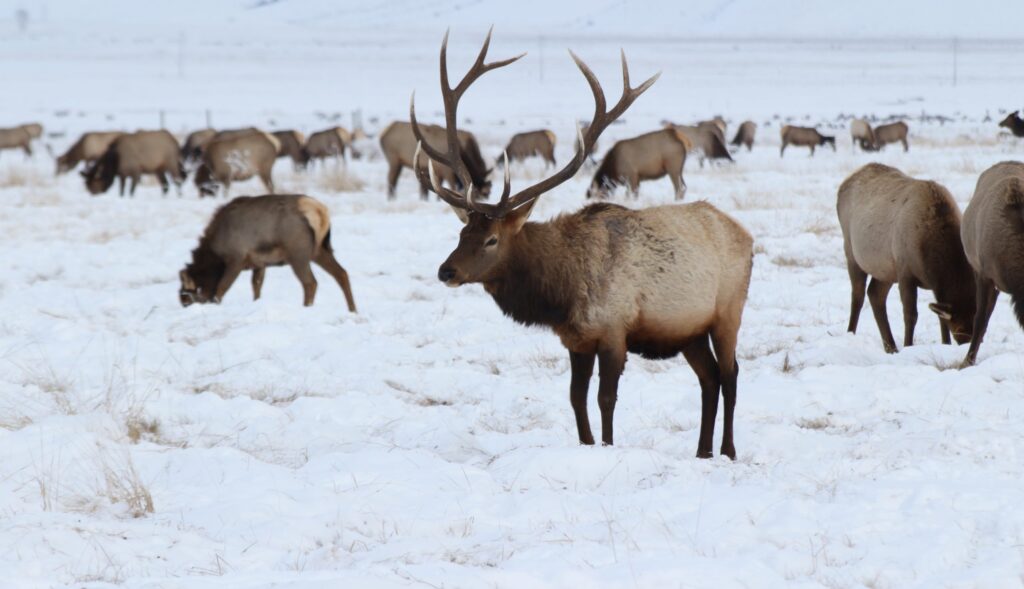With snow beginning to fall on the Tetons, we can anticipate that the local wildlife will also begin their winter transitions. For elk, who this winter will migrate down to the National Elk Refuge, we should be expecting bull elk to shed their antlers soon, which usually happens in December/January.
In honor of National Wildlife Refuge Week, we thought we’d share a bit about why elk go through this arduous cycle every year.
When you see a bull elk in the Greater Yellowstone System, take a careful look at his antlers. Are they perfectly matched, mostly matched, mismatched, or even broken off? Females prefer larger antlers because the bigger antlers you can grow, the healthier you are, i.e.. more successful at finding food in and adapting to the local ecosystem. Males that survive despite the burden of their massive antlers – some growing over 300” over the course of just a few months – are chosen by the females to breed and get a chance to pass on their genes.
Growing big antlers, however, isn’t enough. Bull elk need to grow symmetrical antlers to really impress the ladies. Asymmetrical antlers are not attractive, even if they’re large in size, because they’re an indication of a malfunction. Some asymmetrical antlers are actually genetic, but most are likely from an injury. Even a back injury can result in asymmetrical antlers. Antlers can be damaged or break off while they are growing, or later on after the velvet is sloughed off. A bull elk prone to such injuries might not be the agile, athletic male that a female wishes to sire her young.
Shedding antlers annually is a seriously high price for a bull to pay, as it taxes their energy and calcium reserves. The life expectancy of a bull elk is only half that of a cow elk, and the annual regrowth of antlers is a contributing factor. But regrowing antlers does give bull elk another chance at impressing the females each year. If the pedicle – the base of growth for the antlers, where they attach to the skull – is damaged, the antlers will probably return lopsided every year and the bull elk may never have much of a chance to breed. In many cases though, if an antler breaks or is damaged while growing, a bull will shed those damaged antlers and grow back a perfect set of symmetrical antlers the following summer that will help him attract cow elk in the fall.


